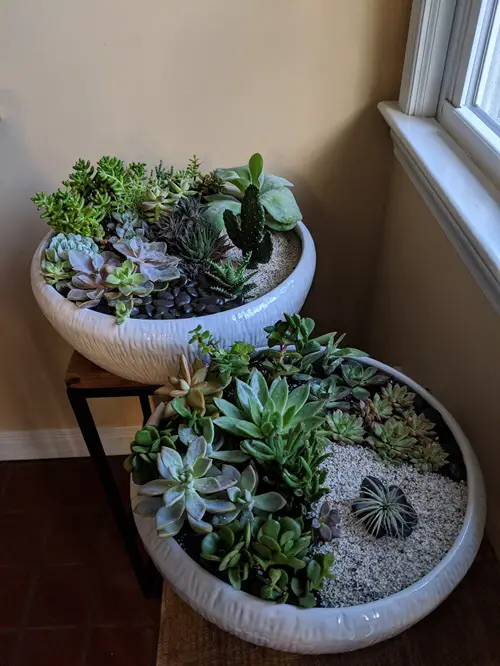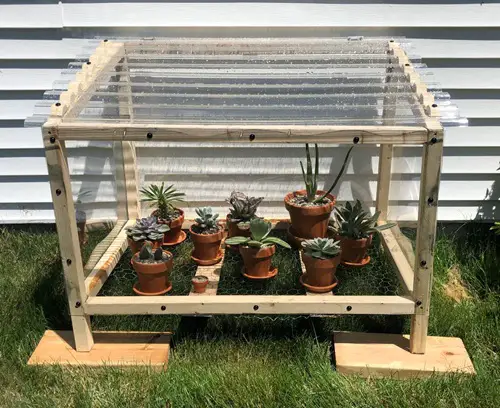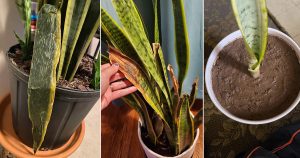Worried about your plants this winter season? Here are seven Ways to Shield Your Succulents from Cold Weather and Frost!
Winter is coming! As it can be tough for all kinds of flora and fauna, so is difficult for succulents too. During this season, they need a little extra care and the warmth of your love. To keep them safe and thriving during the freezing months here are some of the best ways to shield your succulents from the cold weather and frost.
Best Ways to Shield Your Succulents from Cold Weather and Frost
There is a variety of succulents called hardy cold weather succulents like Sempervivum and Sedum. These hardy succulents can withstand living outdoors all year even in cold and snowy weather. However, tender or soft succulents like Echeverias, Aeoniums, Crassulas, and Haworthias cannot handle freezing climates, so they need to be protected during the winter. Here are some of the ways to do so.
1. Bring Them Indoors
For soft succulents bringing your succulents indoors is the most obvious answer. Ideally, you should plan ahead about six weeks to confirm you can maximize the safety of your plants before bringing them indoors. The first thing you need to do is check for pests.
Make sure your plants are pest-free before bringing them indoors since you don’t want to risk spreading mealybug or any kind of pests to your other indoor houseplants. This is also a great time to groom your succulents. Now is the time to remove debris, weeds, and any dead or dry leaves. Fungi and pests thrive on dead foliage, so be sure to clean your succulents thoroughly.
2. Place Near a Sunny Window
Once you are done inspecting your succulents the next thing you need is a spot where they can get as much light as possible. This is really important, especially for succulents that stay outside for a long time and the plant has gotten used to being exposed to bright light every day.
To aid their transition be firm to place your succulents where they can still get six to eight hours of bright light per day or at least three hours daily to keep them healthy. The best way to ensure maximum light exposure is by placing them near the brightest windows. On top of that, you will also need to keep the air moving to dry up the soil fast. This will prevent them from getting rot and pest infestation.
3. Insulate the Ground by Mulching!

All of your succulents will benefit from a layer of organic mulch (a combination of things like straw, shredded leaves, or wood chips) around the base of the plant. What it does is, insulates the roots against the frost and snow by providing a thick layer that keeps the soil temperature consistent during freezing weather.
You can also mix some pebbles or rocks along with the organic matter to make a mulch that is sturdy as well. This will help prevent the mulch from blowing away in frosty winds.
4. Keep Your Succulents Cozy with Covers
Cover the succulents with breathable frost cloths or blankets on nights when frost is expected. Don’t forget to remove the coverings during the day to allow sunlight and air circulation. For this, you can also use your old bedsheets if those aren’t too heavy to damage your plants.
Some gardeners also prefer to use plastic sheets to cover their plants and vegetables during the winter. This helps to lock the moisture and warmth inside but if you do not remove it after the sun comes up then it might bring some damage to your plants. So, use accordingly!
5. Plan to Build a Mini Greenhouse!
Constructing small structures using clear plastic or plexiglass can create a controlled environment for succulents. This helps in protecting them from harsh winter conditions. Plastic tents or cloches can be a great protective shield against frost and cold winds. They act like mini-greenhouses, trapping warmth during the day and protecting plants from frost at night.
6. Group Plants Together for Warmth

Clustering succulents together can help create a microclimate that offers some protection from the cold and wind. Be mindful of the species you group, as their care requirements may differ. This technique works best if you group plants with similar needs and cover them under a shared frost cloth.
Then there will be more insulation built from all the plants and will stay for longer hours as well. This works for outdoor plants very well.
7. Cut Back on Watering
Another thing you need to pay attention to is that indoor succulents often don’t need much watering during winter. So make sure to water them only when the soil is completely dry.
Especially for winter dormant succulents, it’s important to reduce their water intake. Otherwise, they will eventually suffer from root rot caused by excess moisture.
Hope this helps you! But you can also let us know if there are more ways to shield succulents during the winter season in your region!












